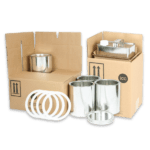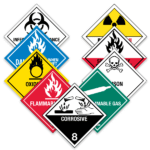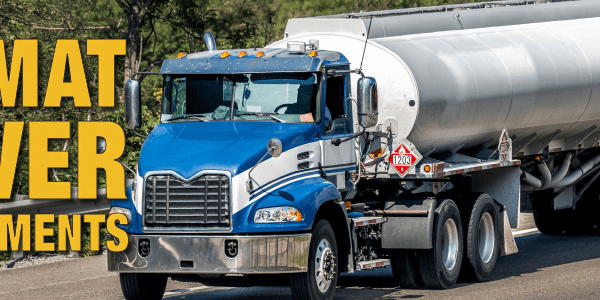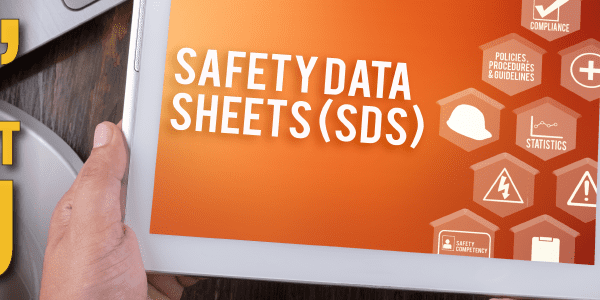U.S. Sponsors National Preparedness Month for September
Are you prepared for a disaster?
It’s an important question. Some disasters can give advanced warning, like hurricanes that can be detected days away. Others, like the flash fires in Lahaina, can happen without warning. So the U.S. Federal Emergency Management Agency (FEMA) has designated September to be National Preparedness Month to publicize the need for organizations and individuals to put thought into what to do in an emergency.
This year’s theme is “Take Control in 1, 2, 3.” FEMA wants to make creating an emergency plan less intimidating by breaking it down into three manageable steps.
Step 1 – Assess Your Needs
Every workplace and every home are unique. There’s no “one size fits all” solution.
For workplaces, a full Business Impact Analysis (BIA) should be done to consider the potential consequences (financial and otherwise) of disasters. Then, a written comprehensive emergency plan should be created. This plan should include evacuation procedures, communication protocols, and strategies for safeguarding employees and assets. Important aspects to consider are:
- Location – Do you have facilities in Tornado Alley? Near a faultline? In an area subject to extreme heat or extreme cold?
- Your facilities – Consider your workplace setup. If you need to evacuate, it’ll be a different procedure if you’re all on one level versus working in a high-rise tower. How far away are fire and other emergency services?
- Your workforce – How many people are on-site? Would any of them have physical or other difficulties in evacuating or taking protective measures? Don’t let them get left behind because, at the last minute, it’s realized that a coworker in a wheelchair can’t navigate down a stairwell easily. Language and literacy should be considered. Can everyone identify warnings or instructions in the main workplace language? Do workers often travel off-site? If so, how can they be protected while traveling?
- What chemicals and hazards are on site – Obviously, if your workplace handles large amounts of dangerous chemicals, such as chlorine gas or explosives, you’ll have to make that a large part of your plan. But even small amounts of hazardous materials can pose a risk in a fire or catastrophic weather situation. Make sure you follow all local, state, and federal Community Right to Know requirements and touch base with local authorities so they’re aware of what type of hazmat they might have to deal with.
For the home, you’ll have to consider many of the same issues.
- What are the most likely emergencies to occur near your home? Preparing for blizzards may not be the best use of resources in Florida, but essential in Alaska. Tsunamis aren’t an issue in Kansas, but a significant risk in Hawaii.
- What’s your family composition? Children, the elderly, and those with physical or psychological issues may need additional preparation. Here are some tips on helping people who may have extra difficulties in an emergency.
- What would you need to survive for a while if you can’t get to stores0 Food, water, and medication are all important. Don’t forget heat, lighting, and first aid supplies, as well as a way of communicating and getting information. For example, if cell phone towers are destroyed by a storm, a battery-powered or hand-cranked radio can help you find out what’s going on. The NOAA Weather Radio service is one of the best sources for real-time emergency information in weather-related incidents. FEMA also has a free cell-phone app for weather and other life-threatening emergencies. Other sources of information can be found here. (In Canada, the National Public Alerting System sends out important information by radio, television, and wireless communication.) If you can still access social media, it can be helpful, but remember there are a lot of scammers and hoaxers out there, even when lives are on the line. Bookmark reliable sources before an incident so you know who you can trust.
Step 2 – Make Your Plan
Workplaces should consult their local and state/provincial regulations to find the minimum requirements for emergency preparation. But don’t stop at the minimum! Planning for emergencies may take some time and money but will pay off. To protect your company’s assets, follow these steps:
- Establish an emergency response team and chain of command.
- Create a communications plan, using multiple ways of ensuring your employees get the information they need, such as workplace closures. And it goes both ways – make sure that employees can contact management easily when things go wrong.
- Protect essential data with off-site data storage and backups.
- Training, drills, and emergency scenarios are important not just to keep your employees up to date in your plans but to identify any weak spots.
- Have a business continuity plan to ensure that critical operations are protected and can resume as soon as possible.
- Establish a robust and flexible supply chain. Events far away can have big impacts – for example, last year, floods in Quebec severely impacted the kitty litter situation across North America!
- Engage in your community’s response planning and communication.
Keep the plan in writing, and make sure workers are aware of it, and what their roles will be. Who are the designated responders? Where are emergency supplies kept? What are the safest evacuation routes, and where should people gather? What resources (local, state, and federal) can we call upon?
For your home, FEMA recommends the following:
- An emergency kit. This should be designed according to your needs assessment in Step 1. It should include as necessary:
- Basics like food and water, at least enough for three days (or longer, depending on your needs).
- Dry clothes can be vital in bad weather – consider putting at least one full set for each person in a sealable plastic bag or container.
- Required prescription medicine and any over-the-counter remedies that may be necessary, such as painkillers or antihistamines. If possible, keep an extra supply travel ready.
- First aid supplies.
- If possible, a backup power source (essential for important medical equipment such as breathing supports). Power banks can be useful to keep small electronics running, and larger lithium battery-powered sources can be used where generators running on flammable liquids aren’t safe or allowed. Many of these even allow for charging with solar panels for prolonged use. If you have emergency equipment that runs off non-rechargeable batteries, such as AA cells, have a good supply of those on hand.
- Candles are the traditional light source in power outages but pose a significant fire risk. Personally, I’ve found rechargeable LED lights are not only safer but provide better light in power outages.
- A battery-powered radio. Many can be purchased that also can serve as light sources or emergency beacons for attracting help.
- Supplies for any animals, including water and dried or canned food. Leashes for dogs and pet carriers for other animals should be kept close at hand.
- Books, games, or other activities to keep occupied while the power is out.
- Important family documents (such as birth certificates, passports, and essential financial information) in a safe, waterproof place.
- If evacuation may be necessary, keep your supplies near the door in a handy bag or carrier, so you won’t waste time looking for them.
- Emergency meeting locations. If the family is scattered, it may be difficult to communicate. Have a designated place to meet if your home becomes inaccessible, such as a school or church. Make sure people know the address and how to get there.
- Contact information. Not just for your family, but sources of help in an emergency, such as fire departments, poison control, and emergency services. Remember that 911 may be overwhelmed and being able to call for help directly can be important. Also, in the aftermath, you may need help getting power restored or debris removed. FEMA recommends you store this information twice – first as a hard copy in a watertight container in your emergency kit, but also on your electronic devices.
- Evacuation information. Do you have accessible transportation? If you have your own car or truck, make sure it’s gassed up and in working order. (But remember if you store additional gasoline, it must be in approved containers and kept in a safe place away from living quarters. Don’t set your home on fire while preparing for some other disaster.) Learn your local evacuation routes and figure out alternatives in case the first one is blocked.
- Other transport options. If you don’t have your own transportation, or are concerned it might not be available, check with local transit providers. Also, talk to your local emergency management agency to identify appropriate accessible options.
- Pets. Keep pets under control during bad weather. However, don’t leave animals tied up if you may have to evacuate. Research places you could stay with animals if necessary. And of course, have your pets microchipped or otherwise identified in case they get lost.
The site Ready.gov has a page where you can create your own plan and download it for reference.
Step 3 – Engage Your Support Network
For organizations, there are many governmental resources for disasters, but don’t overlook trade associations and NGOs (non-governmental organizations). These groups can help you create a plan not just to protect your own property but also to help the community. Take part in your community emergency planning – see what resources can assist you, but also find how you can meet special needs of the community with your organization’s skills and abilities. For example, can you help with a community disaster drill? Do you have special communication abilities that could be used, such as radio or television broadcast facilities?
Individuals and families should create a support network for emergency situations. This network can include your family, your friends, your church or other community groups, and your employer. During the pandemic, many people who lived alone realized how important such a network can be, not just for physical assistance but emotional support and encouragement.
FEMA recommends:
- Create a list of your network, identifying friends, family, fellow congregants at places of worship, and neighbors who can help you and check on you during an emergency.
- Let people in your support network know of any specific needs of your family.
- If possible, have a neighbor or friend have an extra key to your home and let them know where you keep your emergency supplies.
- Research your local hospital’s emergency plans. Find backup service providers if your main hospital or clinic is out of action. Don’t forget to look into veterinary services if you have pets.
- Many communities have preparedness events or initiatives. Take part and learn more about how disaster preparedness works.
- Give your best resources – your time and friendship. Reach out and make yourself part of someone else’s emergency network.
Conclusions
Disasters can strike without warning, but having a plan and enough supplies can make a big, even lifesaving, difference. Companies and families can all benefit from being prepared. So, this September, let’s all look at what we can do to make emergencies survivable, if not pleasant.
Contact Us
Do you have any questions about hazmat regulations and requirements? Contact our team of experts at 855.734.5469 or send us an email, we’re happy to help.
Stay up to date and sign up for our newsletter!
We have all the products, services and training you need to ensure your staff is properly trained and informed.
 Metal Shipping Kits Metal Shipping Kits |
 Hazard Class Labels Hazard Class Labels |
 GHS Within OSHA GHS Within OSHA |
References:
FEMA, “National Preparedness”
Ready.gov, “Make a Plan”
Ready.gov, “Know Your Alerts and Warnings”
National Weather Service, “September is National Preparedness Month”
National Weather Service, “NOAA Weather Radio”
Public Safety Canada, “Emergency Preparedness”







 ICC USA
ICC USA ICC Canada
ICC Canada